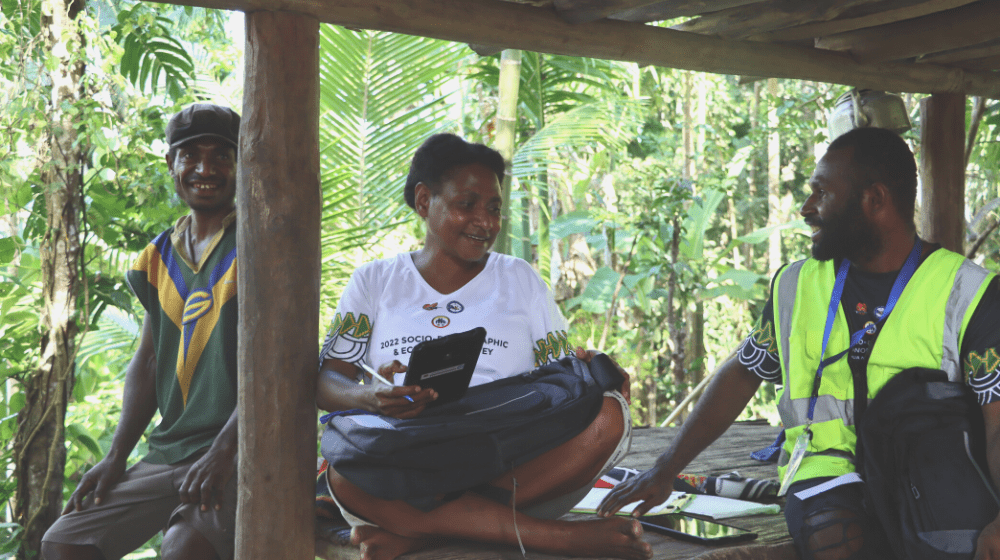By almost any measure of development, Port Moresby is strides ahead of every other city in Papua New Guinea. The nation’s capital has the highest concentration of doctors, medical services, and education opportunities, despite having the 9th highest population of any province in the country.
However, behind these numbers is immense inequality, as numbers are skewed towards the country’s privileged few who can afford the benefits of healthcare and education that the nation’s capital provides.
A recently completed national sample survey seeks to uncover the reality of life and livelihoods in Papua New Guinea, and respondents are eager for the conditions in the capital to be uncovered, especially the true size of households.
Roselyn is a resident of Waigani. Living with her husband and children, she said that her household is different to some of her neighbours, many of whom share with extended family.
“In my house, it’s only me, my husband, and our kids,” she shared. “But in some other houses, there’s more than 10 in a house. They are overcrowded and there is only one breadwinner.”
Household size is an important piece of information for planning for the future of the city and the country. The number of people living in one home impacts energy consumption, water usage, and waste management. Each of these things must be accounted for when planning for population growth and urban migration, and this survey provides an accurate picture of household size in 335 communities surveyed across the country.
Roselyn was participating in a national Socio-Demographic and Economic Survey (SDES). The SDES was conducted in late May and early June with 466 survey collectors visiting 5,000 households, covering every district in Papua New Guinea. The questions included details on household size, the age and gender of residents, education levels, health, and access to water and energy. The results will be available in early 2023.
Roselyn hopes that her responses, and those of her neighbours, can show to planners and decision makers the standards of living in Port Moresby.
“I think in urban centres like this, the most important thing for people to understand is the standard of living,” she said. “It’s good that this team is coming out to get this information and ask just simple questions.”
In 3 Mile, one resident shared that the most important issue to her and her family was employment. She also shared Roselyn’s concerns that the true size of households is likely to be larger than most estimates.
“It is good that people are asking these questions because we have extended families living in one house,” she said. “It’s important to know how many people are living in one house and the real population.”
This resident shared that employment opportunities were important to people in Port Moresby, as the number of people in households dependent on one income left many residents without financial security. For disadvantaged and vulnerable groups, reliance on a single breadwinner also restricts their ability to escape violence or abuse, as there are limited opportunities to support themselves.
“I hope this information will help make a better living for future generations,” she said. “I hope this information works out to be a good thing for planning.”
In total, survey collectors visited 18 locations in the National Capital District, visiting 15 homes in each location. The Socio-Demographic and Economic Survey will show the average household size in NCD and across the country, assisting in planning for our current and future populations, ensuring no one is left behind with access to education, healthcare, and basic human needs such as clean water, food, electricity, and safe housing.
About the Population Data Project
The Population Data Project is an initiative of the National Statistics Office (NSO) with support from the United Nations Population Fund (UNFPA) and the Australian Government. This project includes a Socio-Demographic and Economic Survey. This survey of 5,000 households across 335 communities will provide updated information on education, literacy, families, sources of water and energy, and household characteristics to inform strong planning for a strong Papua New Guinea.


